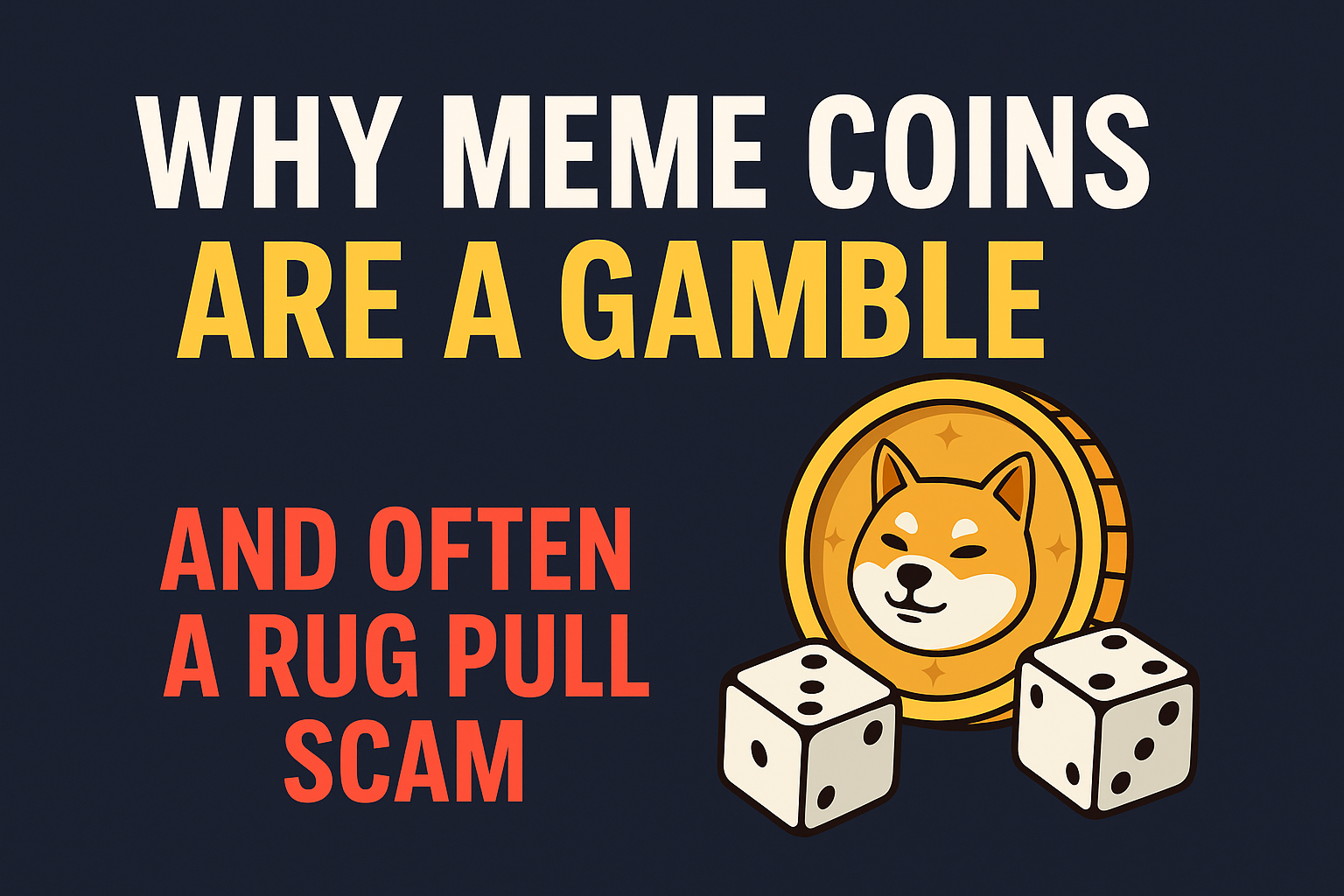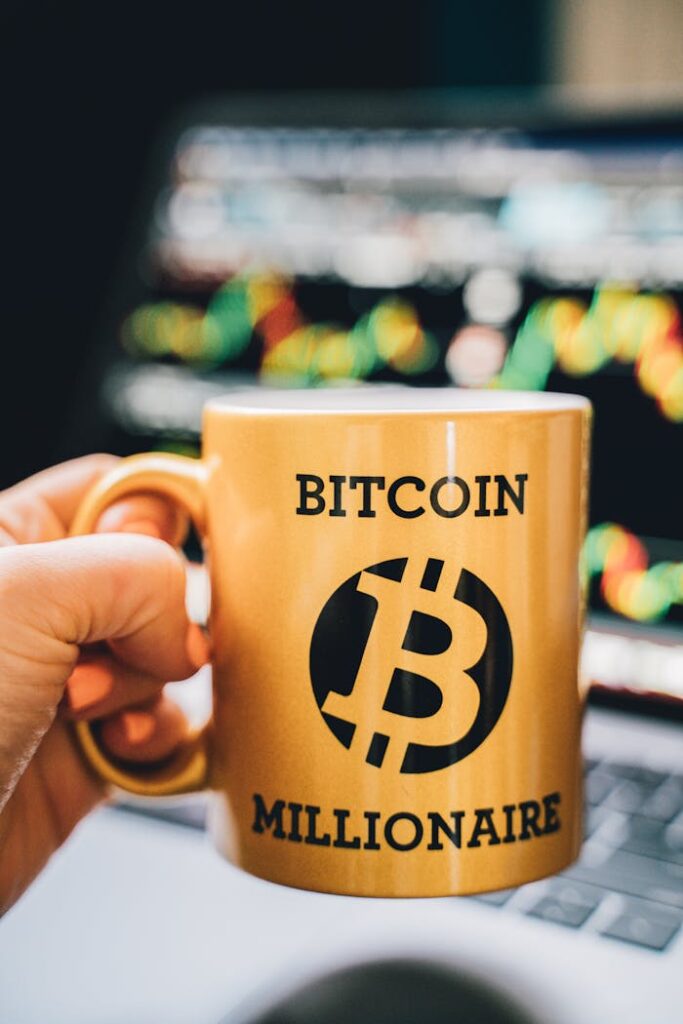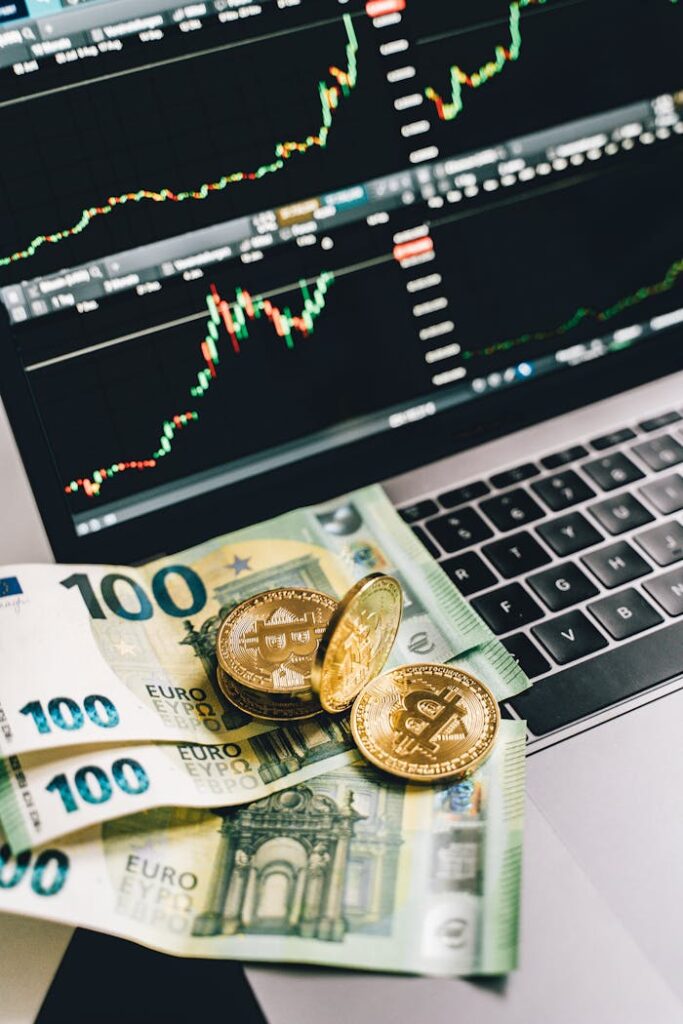In a crypto world driven by hype and social media, meme coins have captured the attention of millions. From Dogecoin to the latest animal-named token, they often explode in value overnight — only to crash just as fast.
But behind the viral tweets, celebrity endorsements, and rocket emojis lies a harsh truth:
Meme coins are not investments. They are digital slot machines — and often scams wrapped in memes.
Let’s break down why meme coins are almost always a gamble, and why many turn out to be rug-pull scams designed to rob unsuspecting investors.
1. Meme Coins Have No Real Utility
Legit cryptocurrencies solve real problems:
-
Bitcoin = decentralized money
-
Ethereum = smart contracts and DeFi infrastructure
-
XRP = cross-border payments
-
Chainlink = real-world data on-chain
Now ask yourself:
What does a meme coin like “FlokiBonkElonMoon” actually do?
The answer is simple: Nothing.
Meme coins are built purely for speculation. They don’t offer any unique tech, real utility, or lasting value — just a name, a logo, and hype.
2. Meme Coins = Emotional Gambling
Meme coins are designed to trigger FOMO (Fear of Missing Out). The playbook looks like this:
-
A coin launches with zero fundamentals
-
A few early buyers pump the price
-
Influencers post “to the moon” tweets
-
Retail investors pile in hoping for a quick 10x
-
Developers or insiders dump the tokens
-
Price crashes — most people lose everything
Sound familiar? That’s because this is classic gambling behavior, not investing.
3. The Rug Pull Trap — How You Get Scammed
A rug pull is when the creators of a crypto project suddenly sell all their holdings or drain the liquidity pool, leaving investors with worthless tokens.
Here’s how it usually happens in meme coins:
-
Developers mint quadrillions of tokens
-
They lock a small amount in a DEX like Uniswap or PancakeSwap
-
Hype spreads, price goes up
-
Liquidity pool is pulled or tokens dumped by insiders
-
Investors are left holding a bag of worthless coins
Meme coin projects often don’t have audits, docs, or a transparent team. You’re trusting anonymous devs — with your money — based on memes.
4. 99% of Meme Coins Go to Zero
Here’s a hard stat:
According to multiple reports, over 90% of meme coins launched in the past 2 years have gone to zero or were abandoned.
Even the few survivors like Dogecoin or Shiba Inu only hold value due to community strength, not real utility — and even those are far below their ATHs.
Most meme coins:
-
Have no long-term plan
-
Are created in minutes with copy-paste code
-
Rely on marketing, not tech
-
Exist to enrich early buyers
5. Meme Coins Waste Your Time, Energy, and Focus
Time spent chasing meme coin gains could be better used:
-
Learning trading discipline
-
Investing in real projects with use-cases
-
Building a portfolio based on research, not hype
When you gamble on meme coins, you’re not just risking money — you’re risking your momentum, mindset, and future focus.
Final Thoughts: Gamble if You Want — But Know What You’re Doing
If you throw $10 into a meme coin knowing it’s a gamble — like buying a lottery ticket — that’s your choice.
But don’t let Twitter or influencers sell you dreams.
Meme coins are not investments. They are high-risk, hype-driven gambles — and often rug-pull scams in disguise.
Unless you’re in early, exit fast, and accept the risk, you’ll likely become exit liquidity for someone else’s profit.
TL;DR – Why Meme Coins Are a Bad Idea:
-
✅ No real use-case
-
❌ Built purely on hype and speculation
-
❌ Often controlled by anonymous devs
-
🚨 High chance of rug-pull
-
🎰 Basically gambling, not investing
Don’t follow the noise — follow the facts.
Read more on safe crypto investing at TheGlobalCryptopedia.com
Let’s build real wealth, not chase fake coins.


